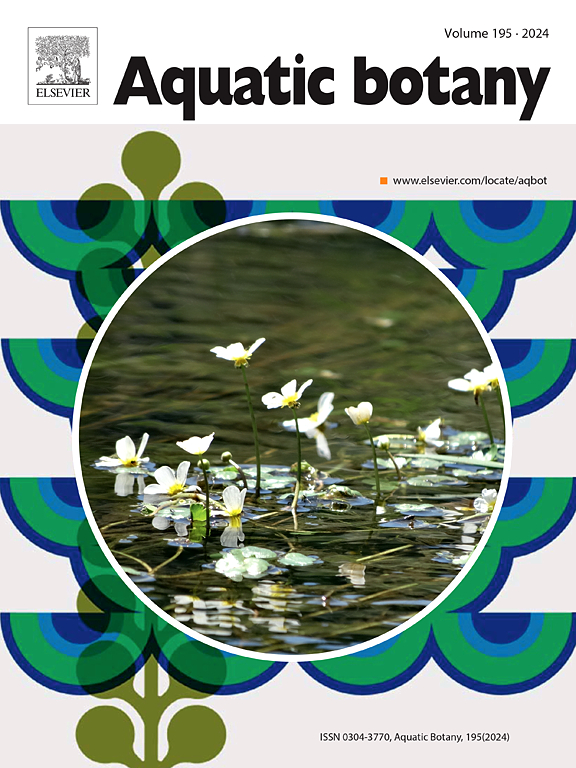海苔(Suaeda martima, L.)生长、生化和植物修复潜力评估Dumort。-盐渍农田中的盐沼盐生植物
IF 2.6
4区 生物学
Q2 MARINE & FRESHWATER BIOLOGY
引用次数: 0
摘要
土壤盐碱化是一项重大的全球环境挑战,通过破坏生态系统服务、威胁生物多样性、降低农业生产力和加速土地退化,严重损害了陆地生态系统的功能完整性。如果不采取有效的开垦战略,预计盐碱化的进展将会加剧,特别是在发展中国家。目前的试验是在泰米尔纳德邦Cuddalore区Nava Pettai村受盐碱化影响的土地上进行的,为期120天,利用海苔作为生物工具评估其减轻盐碱化的效果。本研究探讨了海苔的生长参数、生物量积累、生化、酶活性和土壤理化特性。研究表明,海苔在促进土壤复垦方面具有良好的耐盐性和生物积累效率。该植物具有显著的钠积累能力(478 kg NaCl ha⁻¹ ),使土壤pH值从8.7降至6.7,电导率从4.89降至1.62 dS m⁻¹ ,钠吸附比从15.2降至7.2 mmol L⁻¹ 。在整个试验期间,与对照相比,植株高度、生物量、生化成分和抗氧化酶活性均有显著改善。研究结果表明,反复种植海苔为改善盐碱地提供了一种有前途的可持续方法,从而减轻了受盐影响地区农业生产力的主要限制。本文章由计算机程序翻译,如有差异,请以英文原文为准。
Assessing the growth, biochemical and phytoremediation potential of Suaeda maritima (L.) Dumort. – A salt marsh halophyte in salt affected farmland
Soil salinization represents a significant global environmental challenge, severely compromising the functional integrity of terrestrial ecosystems by disrupting ecosystem services, threatening biodiversity, diminishing agricultural productivity and accelerating land degradation. Without the adoption of effective reclamation strategies, the progression of salinization is anticipated to intensify, especially in developing nations. Current experiment was conducted on salinity affected land over a period of 120 days at Nava Pettai Village, Cuddalore district, Tamil Nadu, utilizing Suaeda maritima as a biological tool to assess its efficacy in mitigating salinity. This study explored Suaeda maritima’s growth parameters, biomass accumulation, biochemical, enzymatic activity and soil physico-chemical characteristics. The study highlights the superior halotolerance and bioaccumulation efficiency of S. maritima in facilitating soil reclamation. The species exhibited a remarkable sodium phytoaccumulation capacity of 478 kg NaCl ha⁻¹ , which contributed to a substantial reduction in soil pH from 8.7 to 6.7, electrical conductivity from 4.89 to 1.62 dS m⁻¹ , and sodium adsorption ratio from 15.2 to 7.2 mmol L⁻¹ . Notable improvements were observed in plant height, biomass, biochemical constituents, and antioxidant enzyme activity was recorded throughout the experimental period compared to the control. The findings demonstrate that the repeated cultivation of S. maritima offers a promising and sustainable approach for ameliorating saline soils, thereby mitigating a major limitation to agricultural productivity in salt-affected regions.
求助全文
通过发布文献求助,成功后即可免费获取论文全文。
去求助
来源期刊

Aquatic Botany
生物-海洋与淡水生物学
CiteScore
3.80
自引率
5.60%
发文量
70
审稿时长
6 months
期刊介绍:
Aquatic Botany offers a platform for papers relevant to a broad international readership on fundamental and applied aspects of marine and freshwater macroscopic plants in a context of ecology or environmental biology. This includes molecular, biochemical and physiological aspects of macroscopic aquatic plants as well as the classification, structure, function, dynamics and ecological interactions in plant-dominated aquatic communities and ecosystems. It is an outlet for papers dealing with research on the consequences of disturbance and stressors (e.g. environmental fluctuations and climate change, pollution, grazing and pathogens), use and management of aquatic plants (plant production and decomposition, commercial harvest, plant control) and the conservation of aquatic plant communities (breeding, transplantation and restoration). Specialized publications on certain rare taxa or papers on aquatic macroscopic plants from under-represented regions in the world can also find their place, subject to editor evaluation. Studies on fungi or microalgae will remain outside the scope of Aquatic Botany.
 求助内容:
求助内容: 应助结果提醒方式:
应助结果提醒方式:


